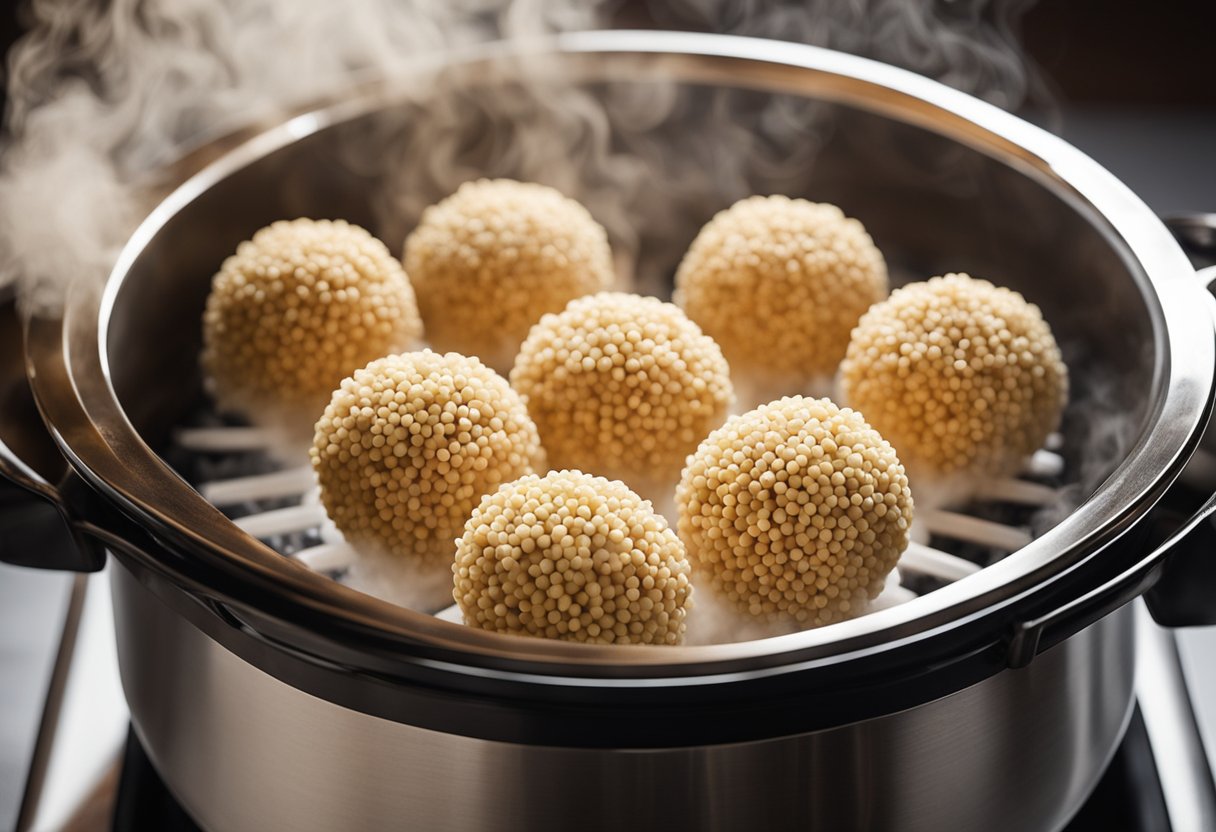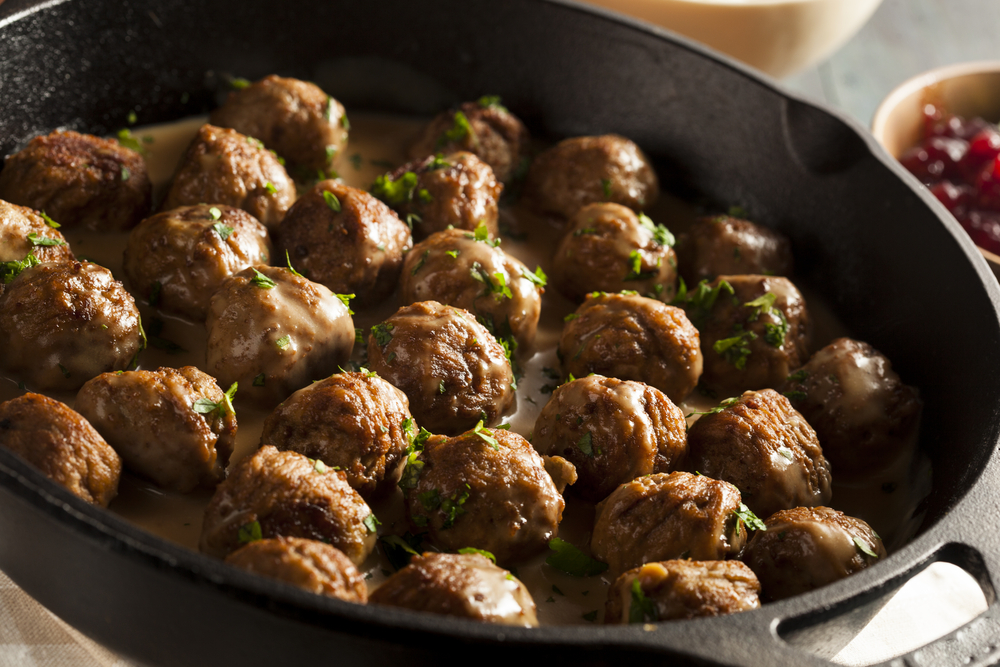As someone who loves rice balls, I know how disappointing it can be when they lose their texture and flavor after reheating.
Luckily, there are several methods to reheat rice balls and bring them back to their original deliciousness. In this article, I will share some tips and tricks to help you reheat rice balls perfectly every time.
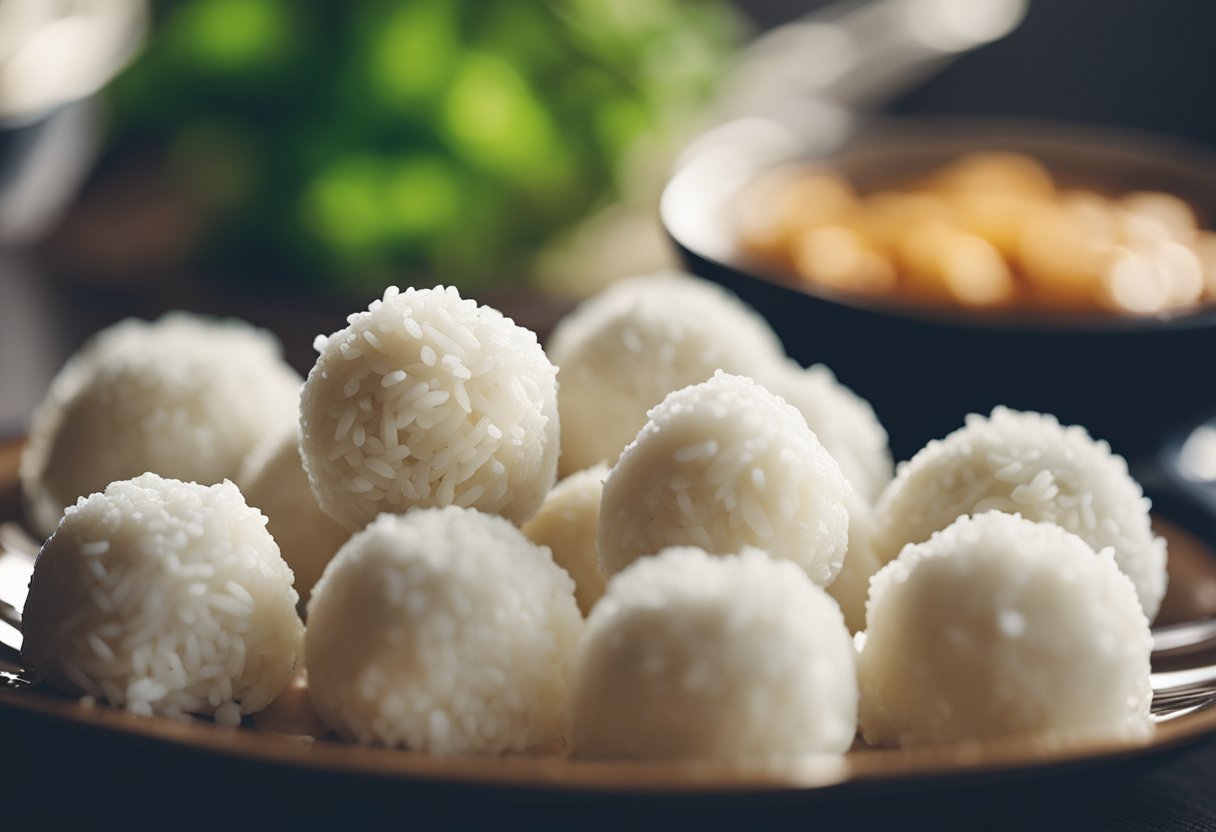
Before reheating rice balls, it is important to prepare them properly. If your rice balls have been stored in the fridge or freezer, let them come to room temperature before reheating. his will help ensure that they cook evenly and retain their texture. If your rice balls have any fillings, make sure to remove any toothpicks or skewers before reheating.
There are several methods to reheat rice balls, including using an oven, a microwave, or a stovetop. Each method has its own advantages and disadvantages, and the best method for you will depend on your personal preferences and the equipment you have available.
In the next section, I will discuss each method in detail and provide some tips to help you achieve the best results.
Key Takeaways
- Proper preparation is key to reheating rice balls successfully.
- There are several methods to reheat rice balls, including using an oven, a microwave, or a stovetop.
- The best method for reheating rice balls will depend on your personal preferences and the equipment you have available.
Preparing Rice Balls for Reheating
When it comes to reheating rice balls, the preparation process is just as important as the reheating method. In this section, I will cover how to prepare rice balls for reheating, including storing after cooking and thawing frozen arancini.
Storing After Cooking
If you have leftover rice balls after cooking, it’s important to store them properly to ensure they stay fresh and safe to eat. Here are some tips for storing rice balls:
- Store in an airtight container: Rice balls should be stored in an airtight container to prevent them from drying out or absorbing moisture from the air.
- Refrigerate promptly: Rice balls should be refrigerated within two hours of cooking to prevent bacterial growth.
- Keep in the refrigerator for up to four days: Rice balls can be stored in the refrigerator for up to four days.
Thawing Frozen Arancini
If you have frozen rice balls, it’s important to thaw them properly before reheating. Here are some tips for thawing frozen arancini:
- Thaw in the refrigerator: The best way to thaw frozen rice balls is to place them in the refrigerator overnight. This slow thawing method will help prevent the rice balls from becoming soggy.
- Avoid thawing at room temperature: Thawing rice balls at room temperature can cause them to become soggy and increase the risk of bacterial growth.
- Use within two days of thawing: Once rice balls have been thawed, they should be used within two days.
By following these tips for preparing rice balls for reheating, you can ensure that your rice balls are safe to eat and will taste delicious when reheated.
Reheating Methods
When it comes to reheating rice balls, there are a few methods to choose from. Each method has its own pros and cons, and the best method for you will depend on your personal preferences and the equipment you have available.
In this section, I’ll go over three popular methods for reheating rice balls: the oven method, the microwave technique, and using an air fryer.
Oven Method
The oven method is a great way to reheat rice balls if you want them to be crispy and golden brown. Here’s how to do it:
- Preheat your oven to 350°F (175°C).
- Line a baking sheet with parchment paper or lightly grease it to prevent sticking.
- Place the rice balls on the baking sheet, leaving some space between each ball.
- Bake the rice balls for 10-15 minutes, or until they are heated through and crispy on the outside.
If you want to ensure that your rice balls are evenly heated, you can use a wire rack instead of a baking sheet. Simply place the wire rack on top of the baking sheet, and then place the rice balls on the wire rack.
Microwave Technique
If you’re short on time, the microwave technique is a quick and easy way to reheat rice balls. Here’s how to do it:
- Place the rice balls on a microwave-safe plate, leaving some space between each ball.
- Cover the plate with a damp paper towel to retain moisture.
- Microwave the rice balls on high for 30-60 seconds, or until they are heated through.
Keep in mind that reheating rice balls in the microwave may not result in the same crispy texture as the oven method.
Using an Air Fryer
If you have an air fryer, you can use it to reheat rice balls for a crispy, fried texture. Here’s how to do it:
- Preheat your air fryer to 350°F (175°C).
- Place the rice balls in the air fryer basket, leaving some space between each ball.
- Cook the rice balls for 5-7 minutes, or until they are heated through and crispy on the outside.
Using an air fryer is a great option if you want to avoid using oil or if you want to cut down on the amount of oil you use. Additionally, using an air fryer can result in a faster cooking time compared to the oven method.
Ensuring Food Safety and Quality
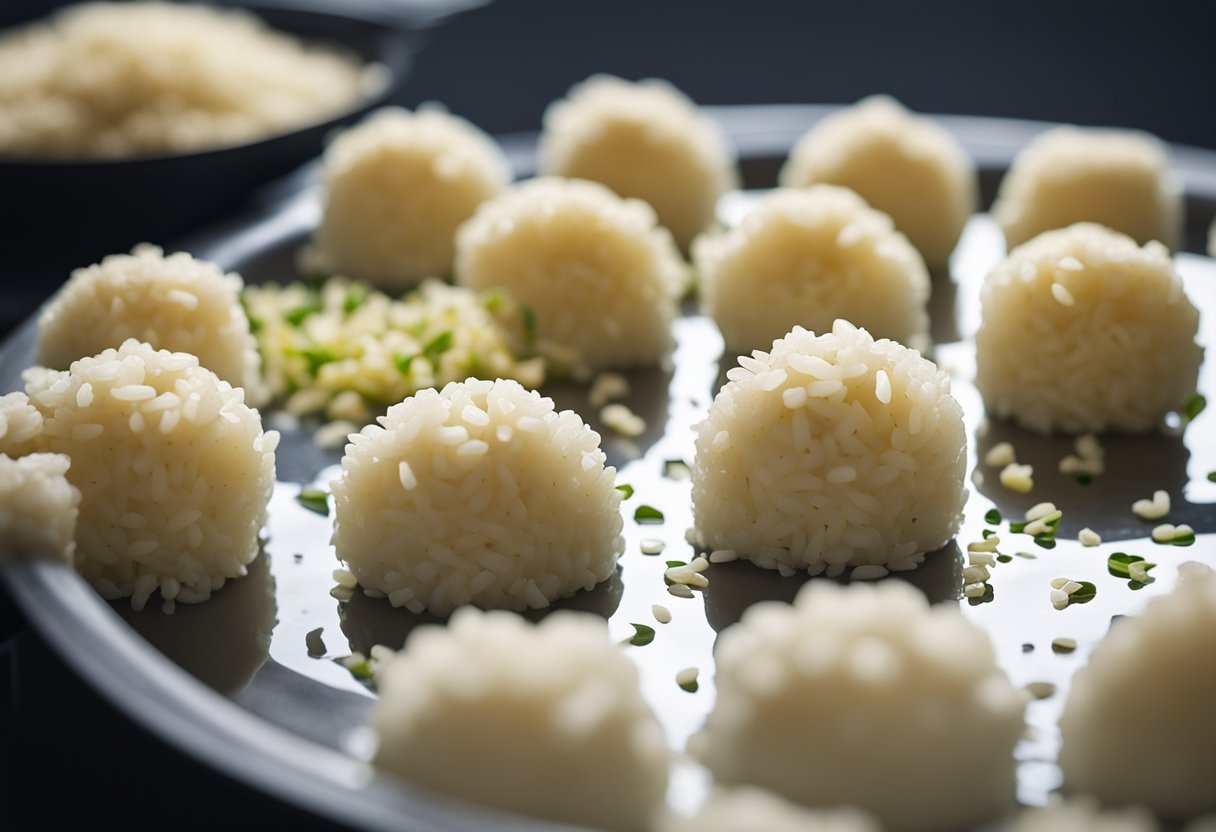
As a food safety precaution, it is crucial to reheat rice balls properly before consuming them. Improper reheating can result in dry or unevenly heated rice balls that may lose their original flavor and quality. Here are some tips to ensure food safety and quality when reheating rice balls.
Optimal Reheating Temperatures
It is important to reheat rice balls to an internal temperature of 165°F (73.9°C) to kill any harmful bacteria that may be present. Using a food thermometer is the most accurate way to check the internal temperature of the rice balls.
When reheating rice balls in the oven, preheat your oven to 400°F (204°C) and bake the rice balls for 20 to 25 minutes if they are not frozen, and for 40 to 45 minutes if they are.
If you are reheating rice balls in the microwave, cover them with a damp paper towel or plastic wrap and microwave them on high for 1 to 2 minutes, or until they are heated through.
Preventing Moisture Loss
Moisture loss can occur during reheating, which can result in dry and unappetizing rice balls. To prevent moisture loss, cover the rice balls with a damp paper towel or plastic wrap before reheating them. This will help to trap moisture and keep the rice balls moist and flavorful.
It is also important to store leftover rice balls in an airtight container in the refrigerator within 2 hours of cooking. Leftover rice balls should be consumed within 3 to 4 days.
If you have leftover rice balls that you do not plan to eat within this timeframe, it is best to freeze them in an airtight container or freezer bag for up to 2 months.
By following these tips, you can ensure that your reheated rice balls are safe to eat and maintain their original flavor and quality.
Accompaniments and Serving Suggestions
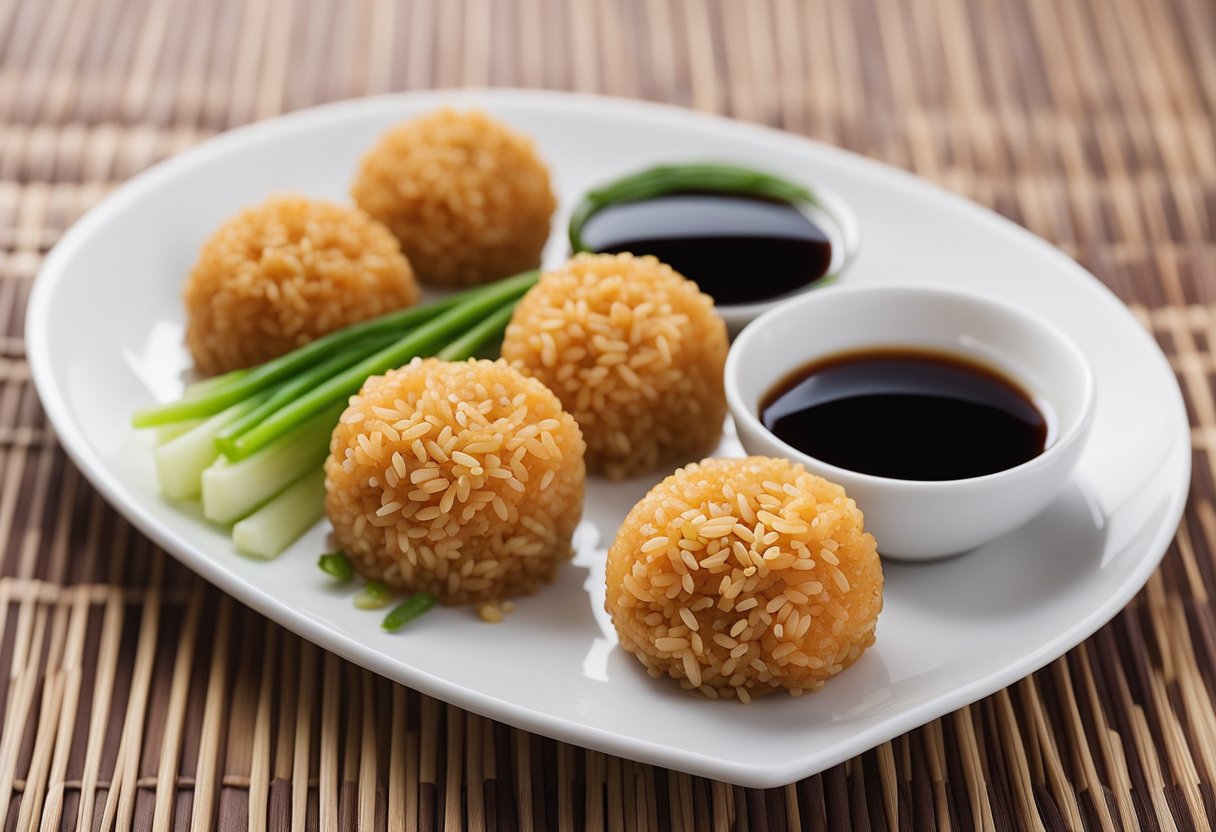
When serving rice balls, it’s important to consider the accompanying dishes and presentation to elevate the overall experience. Here are some suggestions on suitable side dishes and presentation tips.
Suitable Side Dishes
Rice balls make a great appetizer or snack, and can be complemented with a variety of side dishes. One classic pairing is marinara sauce, which adds a tangy and savory flavor that enhances the rice balls.
Another option is to serve them with a simple green salad, which provides a refreshing contrast to the warm and savory rice balls.
If you’re serving rice balls as a main dish for the family, consider pairing them with some steamed vegetables or a side of miso soup. This will balance out the richness of the rice balls and provide a well-rounded meal.
Presentation Tips
To make the rice balls look more appealing, consider arranging them on a platter with some garnishes such as chopped scallions or sesame seeds. This will add some color and texture to the dish, making it more visually appealing.
Another option is to serve the rice balls in individual bowls or plates, with a small side dish of marinara sauce or soy sauce for dipping. This will give each person their own portion and make it easier to eat.
Overall, serving rice balls can be a fun and delicious experience, and by considering the accompanying dishes and presentation, you can elevate the overall experience for yourself and your guests.
Understanding the Origins of Arancini
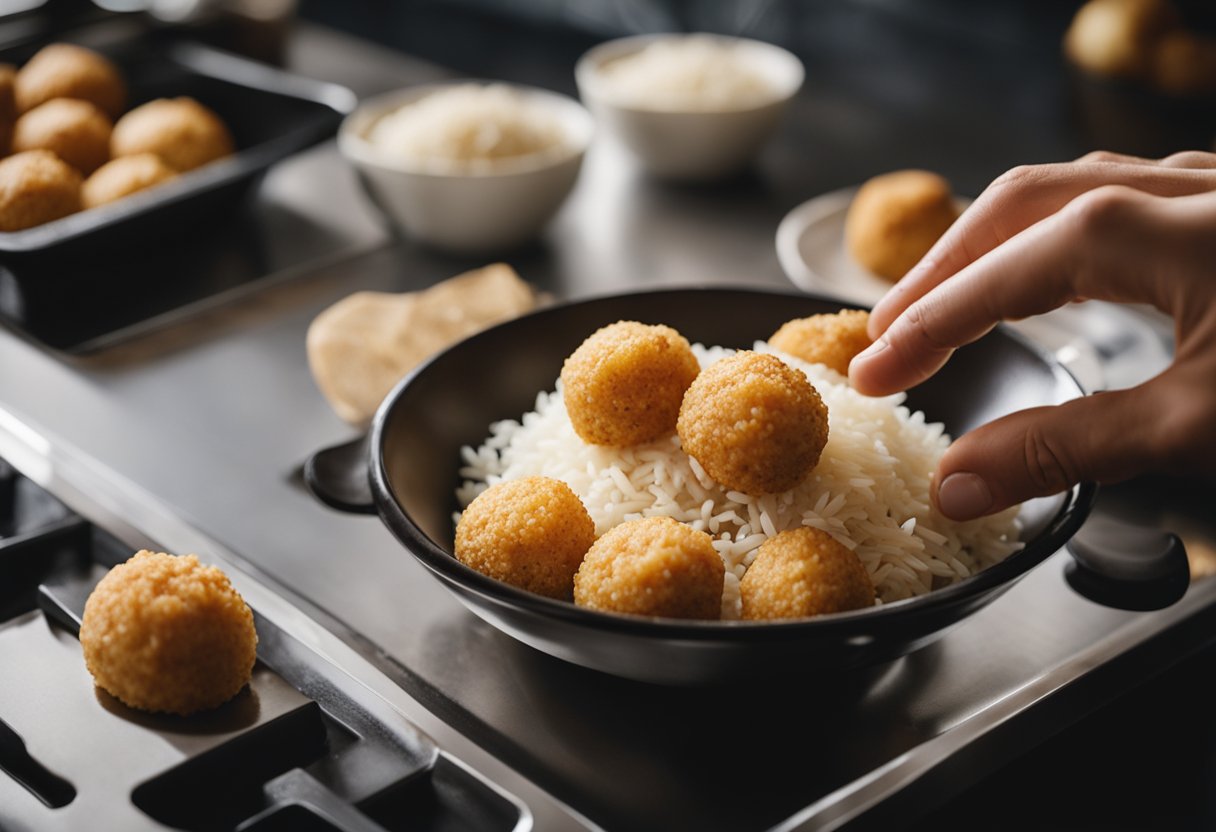
As a lover of Italian cuisine, I always find it fascinating to learn about the history and origins of classic Italian dishes. One such dish that has gained popularity in recent years is the arancini di riso, also known as Italian rice balls.
Arancini is a traditional Sicilian dish that dates back to the 10th century. The name “arancini” comes from the Italian word “arancia,” which means “orange.” This is because the dish is shaped like an orange, and its golden color resembles that of an orange.
Arancini di riso is made by forming leftover risotto into small balls, which are then stuffed with cheese, meat, or vegetables, rolled in breadcrumbs, and deep-fried until crispy. The result is a delicious and cheesy rice ball that is perfect as a snack or appetizer.
Over time, arancini has become a popular dish throughout Italy and is now enjoyed all over the world. It is often served as street food, and each region of Italy has its own unique take on the classic dish.
In conclusion, arancini di riso, also known as Italian rice balls, is a classic Italian dish that has a rich history and has become a popular snack or appetizer all over the world.
Its cheesy and crispy exterior, combined with the soft and flavorful interior, makes it a favorite among food lovers everywhere.
Frequently Asked Questions
What is the best way to reheat frozen onigiri?
The best way to reheat frozen onigiri is by using an oven. Preheat the oven to 350°F (175°C) and place the frozen onigiri on a baking sheet lined with parchment paper.
Bake for 20 to 25 minutes until they are heated through. You can also use a steamer to reheat frozen onigiri. Place the frozen onigiri in a steamer basket and steam for 10 to 15 minutes until they are heated through.
Is it possible to heat up onigiri without using a microwave, and if so, how?
Yes, it is possible to heat up onigiri without using a microwave. You can use an oven or a steamer to reheat onigiri. To reheat onigiri in the oven, preheat the oven to 350°F (175°C) and place the onigiri on a baking sheet lined with parchment paper.
Bake for 10 to 15 minutes until they are heated through. To reheat onigiri in a steamer, place the onigiri in a steamer basket and steam for 5 to 10 minutes until they are heated through.
What are the instructions for cooking frozen arancini balls in an oven?
To cook frozen arancini balls in an oven, preheat the oven to 400°F (200°C) and place the frozen arancini balls on a baking sheet lined with parchment paper. Bake for 20 to 25 minutes until they are golden brown and heated through.
How should large arancini be reheated to maintain their quality?
To maintain the quality of large arancini when reheating, it is best to use an oven or an air fryer. Preheat the oven to 350°F (175°C) and place the arancini on a baking sheet lined with parchment paper. Bake for 10 to 15 minutes until they are heated through.
To reheat arancini in an air fryer, preheat the air fryer to 350°F (175°C) and place the arancini in the fryer basket. Cook for 5 to 7 minutes until they are heated through and crispy.
What is the optimal time and temperature for reheating arancini in an air fryer?
The optimal time and temperature for reheating arancini in an air fryer is 350°F (175°C) for 5 to 7 minutes. Preheat the air fryer to the desired temperature and place the arancini in the fryer basket. Cook for 5 to 7 minutes until they are heated through and crispy.
Are rice balls typically served hot, or can they be enjoyed cold?
Rice balls are typically served hot, but they can also be enjoyed cold. Some people prefer to eat them at room temperature, while others like to heat them up before eating. It is a matter of personal preference.





